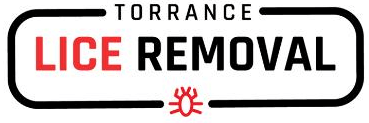Head Lice Symptoms
- If your child is scratching his or her head more than usual, it can be a good idea to check for lice. The most common symptom of head lice is itching. That is because lice bites may cause an allergic reaction that stimulates this itchy sensation. However, it can take a few weeks for this symptom to develop.
- Tickling sensation. Some children experience a “tickly” feeling from lice bites or from lice touching their skin.
- If you see sores or scratch marks on your child’s head or neck, that can be a sign that a lice infestation has begun. Kids often scratch harder than they need to, which can break the skin and cause sores and scabs.
- Head lice can make sleep difficult for youngsters. If your child is having a harder time than usual going to sleep or staying asleep, that might be a sign that head lice have invaded his or her scalp.
- If your child is more irritable than usual, this can be an indication that head lice are present. Irritability often coincides with chronic itchiness and sleeplessness. These symptoms can combine, especially when an infestation is more mature.
It is important to point out that an itchy scalp alone is not always an indication of head lice. Itchiness is also a symptom of many other harmless conditions such as dandruff, allergies, or a reaction to a hair product.
According to the Centers for Disease Control and Prevention (CDC), “Misdiagnosis of head lice infestation is common.” The most reliable symptom, of course, is the presence of a live louse or lice on a child’s head.
How to Spot Lice
To be sure that your child has lice, you’ll need to do a physical inspection of his or her head and neck. To do this, start at the nape area of the neck and around the child’s ears. These are the locations where lice are most likely to live. They stay very near the scalp to stay warm—about a quarter of an inch from the skin. Separate the hair as finely as possible (it can be helpful to wet the hair first). Head lice are about the size of a sesame seed. They can be difficult to see, so some people use a magnifying glass. If you have a louse comb, run it through the hair multiple times, wiping it on a paper towel after each pass. Inspect the paper towel to see if you pull any bugs from the hair. You will be 3-5 times more likely to accurately diagnose an infestation if you comb rather than by visual inspection alone.
About Eggs (Nits)
Identifying and removing live lice is just one step in the lice treatment process. It is just as important to remove all eggs, or nits, or they will hatch and you will have a fresh case of head lice on your hands. Lice eggs are tiny, camouflaged, and they stick with a glue-like substance to the hair. Finding and removing eggs (nitpicking) is best done using a fine-toothed comb. The CDC reports that “Nits are often confused with other particles found in hair such as dandruff, hair spray droplets, and dirt particles.”
Don’t Panic
While a head lice case can be stressful and frustrating for parents, they cause no serious health problems. Also, lice infestations are completely unrelated to personal hygiene. The only reason your child has lice is because he or she had close contact with someone else that had lice.

